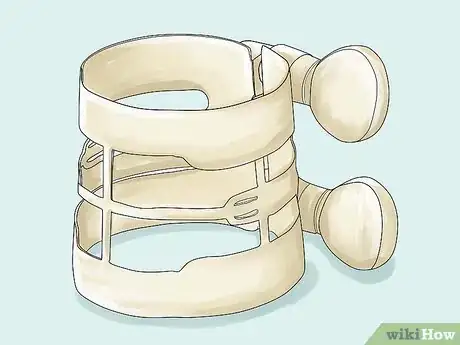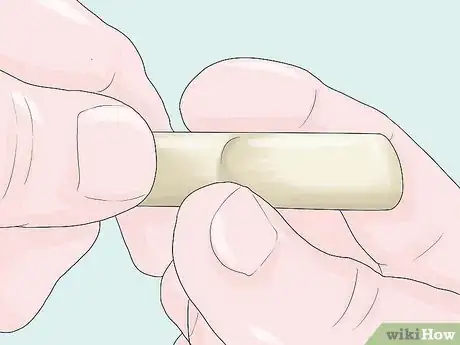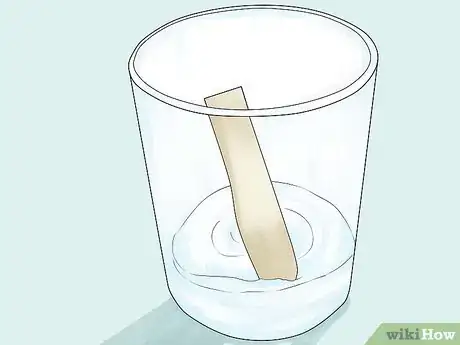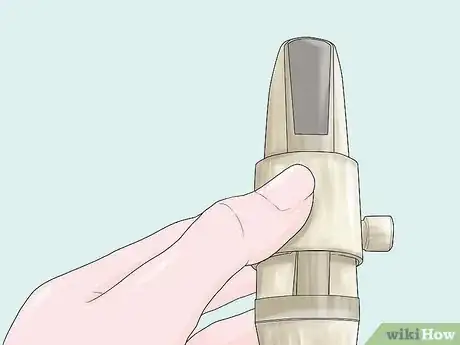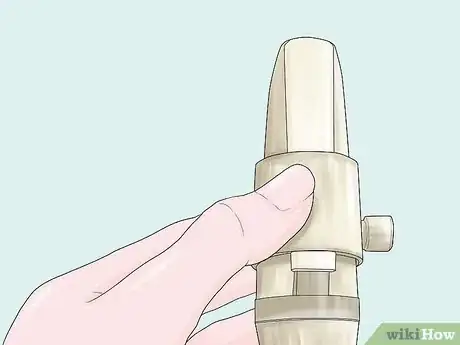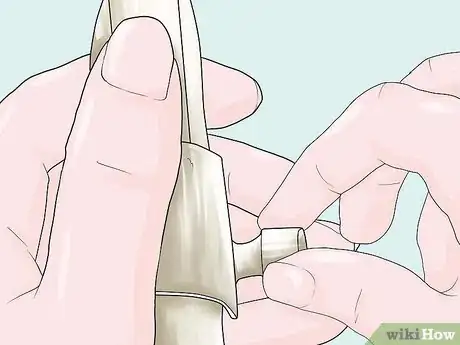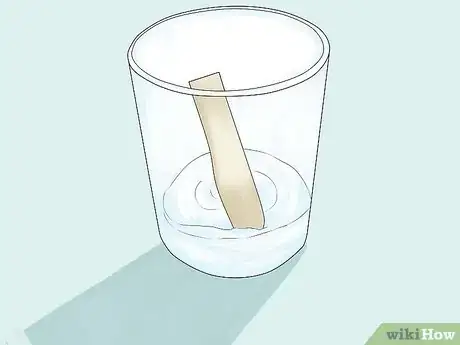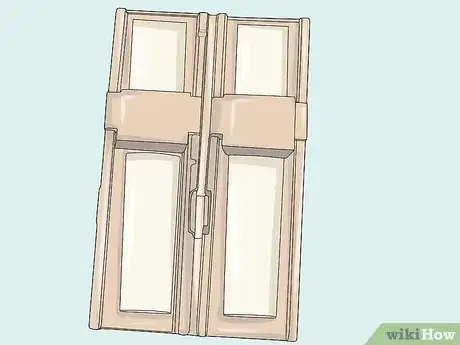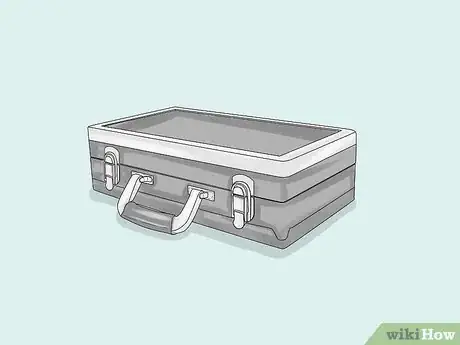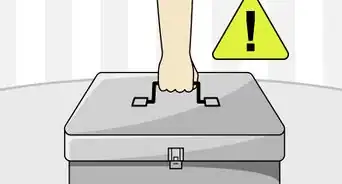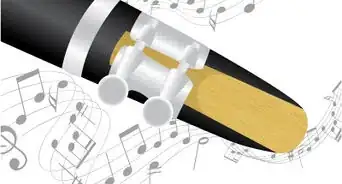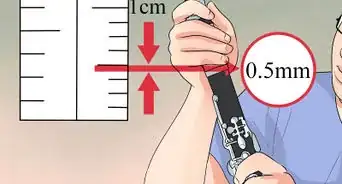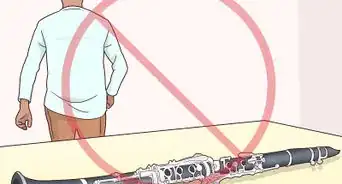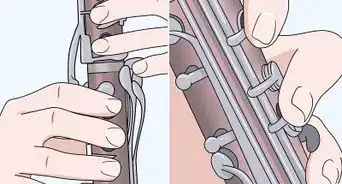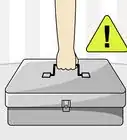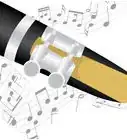X
wikiHow is a “wiki,” similar to Wikipedia, which means that many of our articles are co-written by multiple authors. To create this article, 31 people, some anonymous, worked to edit and improve it over time.
This article has been viewed 148,691 times.
Learn more...
Before you can play the clarinet, you have to put a reed on it. The reed is the second most important factor in producing a sound on the clarinet, second only to you, the player. Putting a reed onto a clarinet can be tricky, as the reed is delicate and thin. You must be very careful to ensure that the reed is put on correctly and is in good condition.
Steps
Method 1
Method 1 of 2:
Putting on the Reed
-
1Make sure you have a ligature. Ligatures can be made of metal or leather - metal ones are silver colored and usually tighten with two screws. Leather ones are more expensive, are usually black, and normally have only one screw. They usually come with the instrument, but can also be bought separately. Ligatures are universally designed for right-handed players: the screw you turn will point to your right side.[1]
- Metal ligatures are cheaper, and can work just fine, but tend to have a tendency to "bite" the reed (create indentations on the bottom where the clamps are that make it difficult to change the positioning of the reed after being played once)
- Leather ligatures are more expensive, but often can create a better sound, and do not bite the reed. The system with one screw is easier and quicker to adjust, and the pressure on the reed is more evenly distributed. They usually come with more expensive instruments, or can be bought separately.
-
2Decide on a reed. Look at color (a green looking reed will not play well, but a yellow or golden brown one will), condition (check for cracks or splits), and the grain of the cane (it should all be going the same direction and should be relatively smooth). The article here will detail this further. Also, be sure that the reed is the strength you're used to, or, if you play with different ones, that it fits the current playing situation.[2]Advertisement
-
3If you wish to wet your reed, wet it only in water. The saliva and acids in your mouth deteriorate the reed. Constantly dry the reed once warmed up because remember, saliva is constantly distributed on the reed as you play. Also, dry by sliding the tip of your finger along the length of the reed toward the point. Reeds are essentially thousands of little straws, so sliding along the reed allows all the straws to point the same way, allowing smoother playing.[3]
-
4Slide the ligature over the mouthpiece until it's almost in its final position, with the screws loosened a bit.
-
5Carefully slide the wet reed under the ligature. Line it up so that it is perfectly centered, the edges are in line with the rails on the mouthpiece, and you can just barely see a tiny sliver of mouthpiece over the tip of the reed.[4]
-
6Slide the ligature down to about the bottom of the reed and tighten it just enough to hold the reed snugly, but not enough to hold it too much (which can stifle the vibrations of the reed), or to break the ligature. Many reeds have a vibration line visible on them. Try to get the top of the ligature below this line to allow the top of the reed the full range of vibration.[5]
Advertisement
Method 2
Method 2 of 2:
Removing the Reed
-
1Unscrew the ligature slightly, and carefully slide the reed out from underneath it.[6]
-
2Take the reed off and wipe it (if necessary) gently to dry it. You can let it soak in clean water for a while (which will extend the life of the reed).
-
3Put the reed into a reed holder until you use it again. A reed holder gives the reed a safe place to sit while it dries, and lets you carry more than one reed at once.[7]
-
4Take the rest of the clarinet apart and put it back in its case, leaving the screws on the ligature a bit loose, to make it easier to put a reed on the next time.[8]
Advertisement
Community Q&A
-
QuestionShould I wet the reed before playing a clarinet?
 Community AnswerYes. You're supposed to wet the reed because it will soften the wood and help the sound come out better and easier.
Community AnswerYes. You're supposed to wet the reed because it will soften the wood and help the sound come out better and easier. -
QuestionWhat should I do if it doesn't fit?
 Community AnswerIf it doesn't fit, it's probably the wrong sized reed. Look for a proper size.
Community AnswerIf it doesn't fit, it's probably the wrong sized reed. Look for a proper size. -
QuestionI will be playing my clarinet just fine and then I have terrible squeaks. Why?
 AnimebreadTop AnswererSqueaking can be caused by your clarinet not being put together properly or your mouth being too far down on the mouthpiece.
AnimebreadTop AnswererSqueaking can be caused by your clarinet not being put together properly or your mouth being too far down on the mouthpiece.
Advertisement
Warnings
- When a reed breaks, throw it away, or it will affect your music dramatically (squeaking). Even just a thin crack can really mess up your sound.⧼thumbs_response⧽
- Do not leave your clarinet unattended without a mouthpiece cap over the reed to protect it.⧼thumbs_response⧽
Advertisement
Things You'll Need
- Clarinet reeds (whatever strength you prefer)
- A clarinet
- A clarinet ligature
References
- ↑ https://www.youtube.com/watch?v=6pqv38D-wuI
- ↑ http://thevault.musicarts.com/how-to-choose-a-clarinet-reed/
- ↑ http://thevault.musicarts.com/everyday-reed-maintenance-tips/
- ↑ https://www.youtube.com/watch?v=FUy-DLdwV9I
- ↑ https://www.youtube.com/watch?v=FUy-DLdwV9I
- ↑ http://thevault.musicarts.com/clarinet-maintenance-care-tips-advice/
- ↑ https://www.youtube.com/watch?v=CTn7uVJGhEY
- ↑ https://www.youtube.com/watch?v=CTn7uVJGhEY
About This Article
Advertisement
